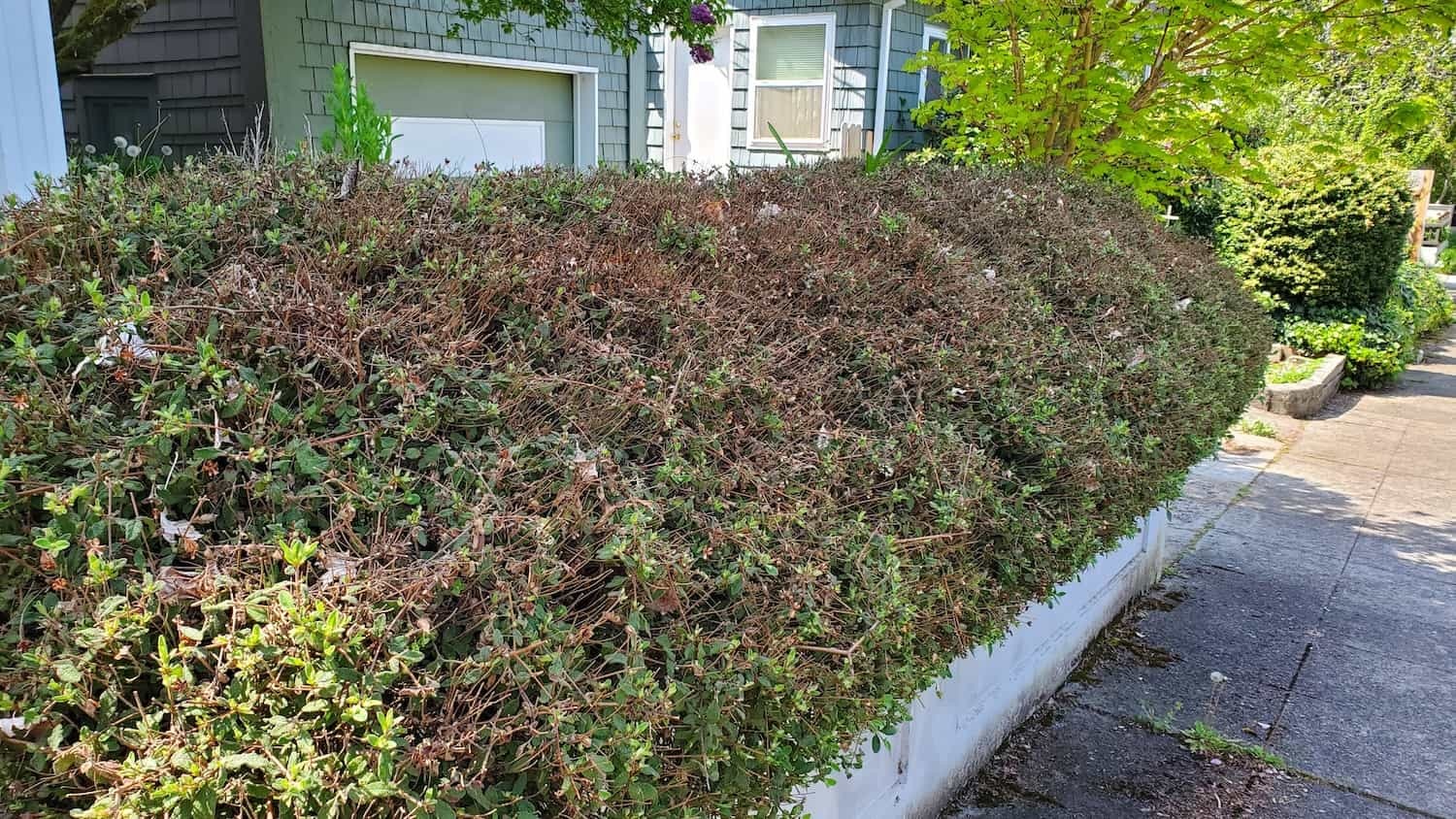West Seattle Selective Weeding Around Ornamentals
Homeowner’s Issue
West Seattle yards face a set of repeat problems: heavy winter rain, persistent shade from cedars and maples, salty wind exposure near Alki, and compacted, often slightly acidic soils on the bluff. Beds under broadleaf evergreens and the north sides of houses stay damp long after rains, which invites moss, liverwort, and shade-loving weeds like ivy, oxalis, and chickweed. Sunny front yards and south-facing slopes by the Admiral district will suffer different pressures — grass invasives and bindweed that sprint in late spring.
Many West Seattle homeowners know the rhythm: late winter is when perennial weeds recover, spring brings fast germination of annuals, and fall’s mild, wet weeks are when weed roots re-establish. Sloped frontages (common on many Junction and Fauntleroy streets) need attention to erosion and mulch washout. HOAs and neighbors expect tidy curbsides and clear sight-lines; that matters here more than in distant suburbs.
If you want your ornamentals — camellias, rhododendrons, Japanese maples, and native sword ferns — to thrive, you have to remove competition without disturbing root crowns or compacting soil. Sustainable, herbicide-free methods work well in our climate, but they require timing, repeat visits, and local plant know-how to avoid collateral damage and to keep beds stable through wet winters.
Our Quality Service
We focus on precision hand-weeding and cultural fixes, never herbicides. On arrival we assess soil moisture, slope, and plant spacing, then choose the right tools: hand forks, hori-hori knives, long-handled weeders, and soft-bristle rakes to avoid root damage. For tough patches we use repeat hand-extraction over two to three visits rather than chemicals, and we follow with organic mulch to suppress seedlings.
Typical timelines: light beds — one 1–2 hour visit; medium beds — 2–4 hours or a half-day; heavy infestations or large slopes — phased work over several visits (we schedule by priority and weather). We plan around Seattle’s rainy season to minimize compaction and to ensure mulch settles properly. Where slopes risk washout, we recommend extra anchoring and thicker mulch layers.
Benefits: safer yards for kids and pets, improved curb appeal, reduced future maintenance, and healthier ornamentals that don’t compete with invasives. We also advise on native replacements that suit West Seattle’s microclimates and on simple erosion-control tactics for bluffs and sloped beds.
What’s Included
- Site assessment and targeted weed mapping.
- Manual selective weeding around ornamentals (hand-pull and root extraction).
- Mulch application (organic bark mulch) to 2–3” unless specified.
- Bed edging and light pruning where needed for plant health and sight-lines.
- Final clean-up and photo documentation on request.
Options / Upgrades
- Mulch + landscape fabric (spot-install only; not across entire bed).
- Soil amendment (compost top-dress) to improve drainage and biology.
- Native plant replacements or infill planting with shade- and salt-tolerant species.
- Debris haul-away (green-waste hauling) vs. preparation for curbside Green Bin pickup.
- Repeat follow-up visits (recommended spring + fall or quarterly cadence).
Before & After / Expectations
- Mess & noise: Expect light-to-moderate debris and gardening noise during work. We leave beds neat and pathways clear.
- Access: We need clear access to beds; move fragile potted plants if possible.
- Debris handling: Choose green-waste haul-away or pickup-ready piles; we’ll confirm before starting.
- Timelines: One visit will improve appearance; full control of stubborn perennials or ivy requires 2–4 visits across the season.
- Care tips for West Seattle: Water newly disturbed roots in morning during dry spells; avoid heavy irrigation that encourages moss. Tackle ivy and perennial blackberry in late spring-summer when crowns are easier to pull. Re-mulch in autumn to protect roots through heavy rains.
FAQs
Q: Do you use herbicides?
A: No. We use manual, mechanical, and cultural controls only — no chemical herbicides.Q: How often should we schedule service?
A: For most West Seattle yards, quarterly keeps things tidy. Monthly or bi-monthly helps high-visibility properties or rental units.Q: Will we need follow-ups for ivy or blackberry?
A: Yes. These require repeated removals and monitoring; we’ll schedule follow-ups as part of a plan.Q: Do you handle slope erosion?
A: We provide mulch anchoring, planting solutions, and erosion-reducing suggestions. Major slope stabilization may need additional work from a specialist.
Call to Action
If you live in West Seattle — from Alki to Admiral — and want your ornamentals protected without herbicides, book a free estimate. We schedule quickly around weather windows and give realistic plans with transparent pricing. Email neatandtidyseattle@gmail.com to send photos or request an on-site visit. We’ll show up prepared, get the job done, and leave your beds ready for the season.










